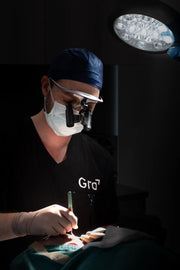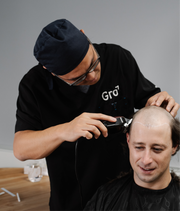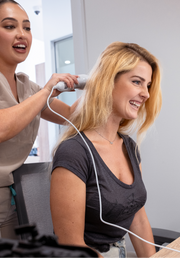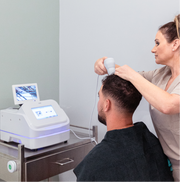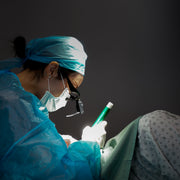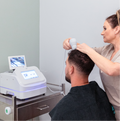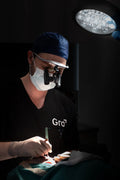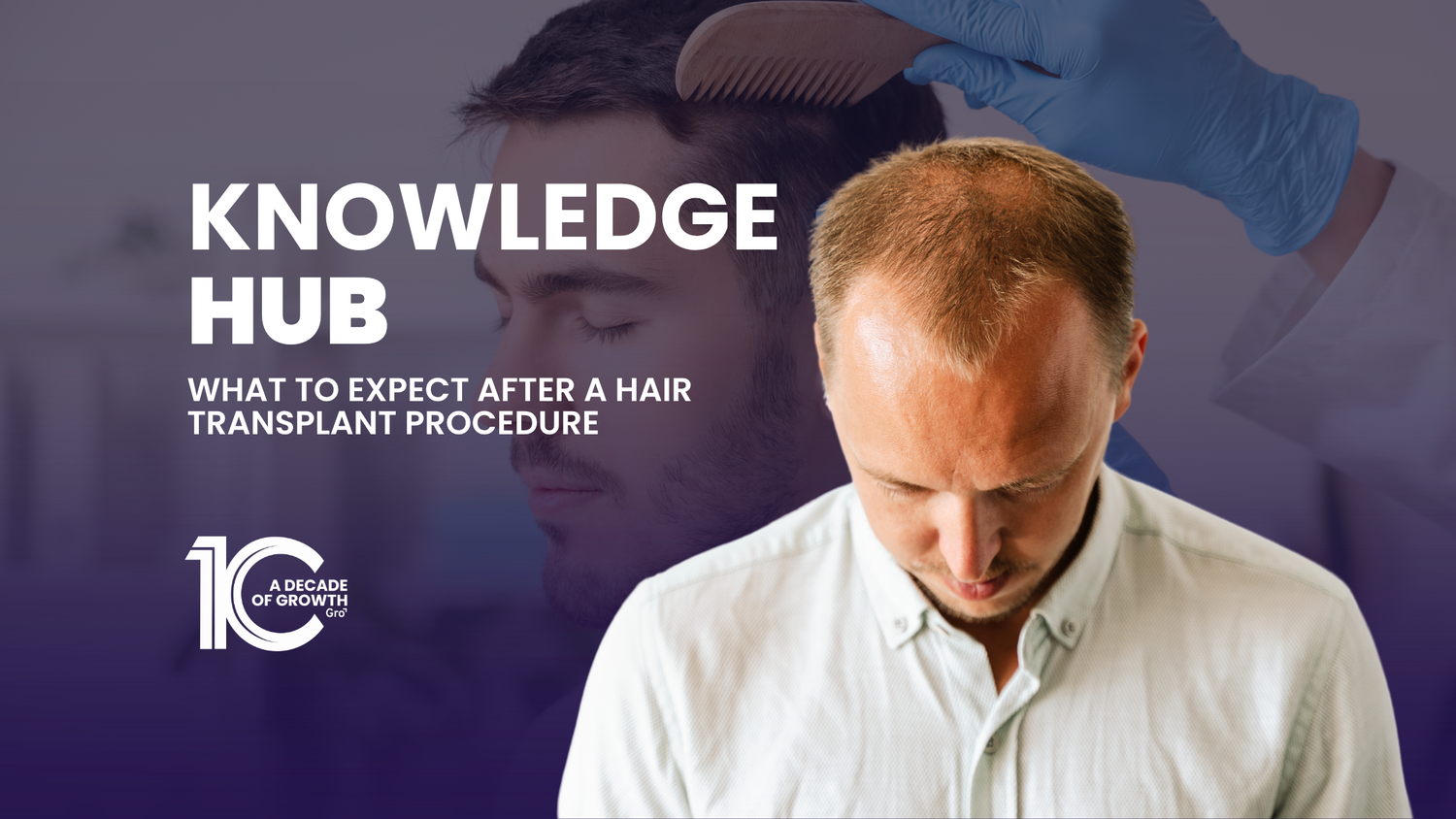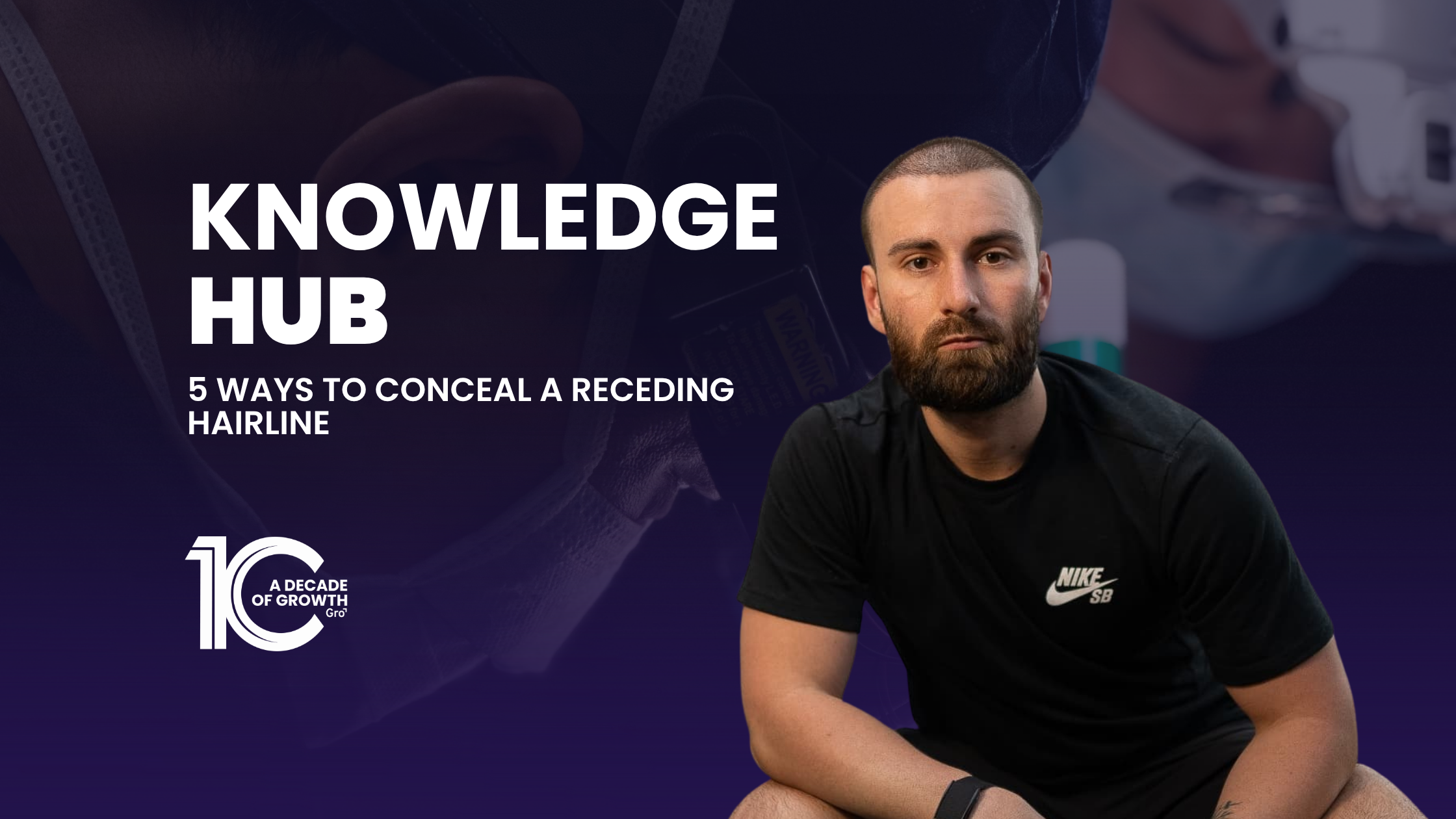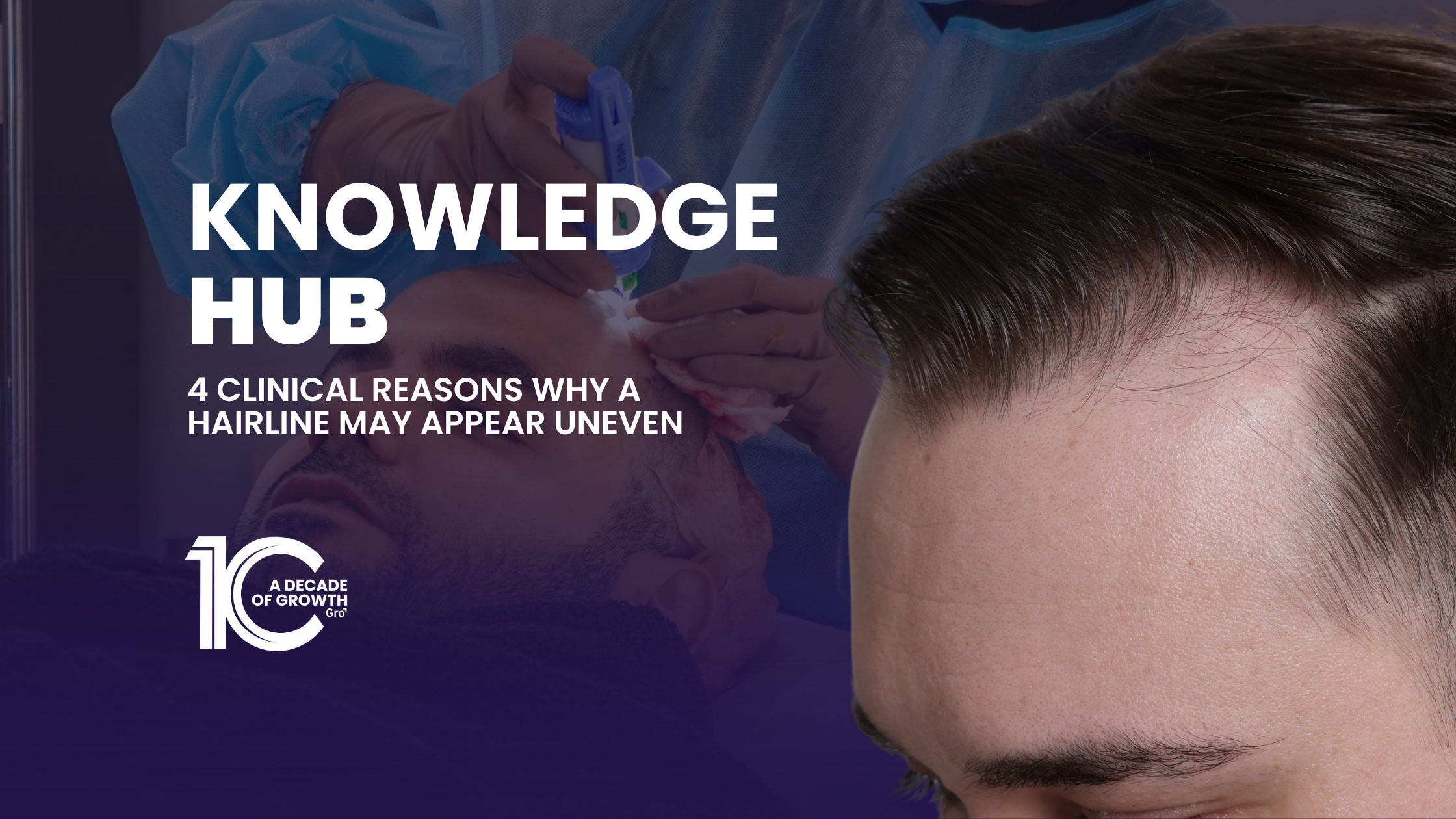A hair transplant is a common procedure performed under local anaesthetic using advanced follicle implantation techniques. At Gro Clinics, this process involves direct implantation of your own hair follicles using a minimally invasive method. Procedures are performed or overseen by doctors and typically take place over one or two sessions depending on the case.
Immediate Post-Procedure Period
The day following your procedure is typically the start of the healing phase. While some people resume light activities shortly after, taking a few days to rest is advised to support recovery.
Included Post-Procedure Support
- A sterile saline spray to keep the scalp moisturised
- Anti-inflammatory medication and antibiotics where clinically appropriate
During the initial 7-day period post-procedure, alcohol and smoking should be avoided while on antibiotics to minimise potential risks.
General Aftercare Guidelines
- Avoid direct sun exposure and swimming for at least 14 days
- Use a loose-fitting hat when outdoors
- Refrain from strenuous physical activity, including heavy lifting, for 4 weeks
- Wait 10 days before commencing prescription hair care treatments
- Avoid medicated shampoos and other topical scalp products for 4 weeks
- Contact your clinic promptly if you observe signs of infection or other unexpected symptoms
What to Expect in the Months Ahead
Hair transplant recovery follows a general pattern, though timeframes can vary:
- Initial shedding of transplanted hairs may occur around 3–4 weeks
- New hair growth often begins around 3–4 months post-procedure
- Progressive thickening may be observed around the 6-month mark
- Ongoing changes can continue up to 12 months post-procedure
It’s important to note that outcomes can vary depending on multiple individual factors, including overall scalp health and adherence to aftercare protocols.
How the Procedure Works
Gro Clinics uses a method that involves extracting and implanting individual hair follicles with precision instruments. The technique is minimally invasive and aims to reduce tissue trauma during the procedure. Every treatment is planned and carried out by doctors or under their direct supervision.
Things to Consider
While hair transplants can be part of a broader hair restoration strategy, they may not be suitable for everyone. A consultation with a trained advisor is the best way to assess your options based on your medical history and current condition.
Clinic Locations
Gro Clinics operates in major cities across Australia and New Zealand:
Disclaimer
This article is for informational purposes only and does not constitute medical advice. Individual results can vary. All procedures are performed by or under the supervision of registered medical practitioners. Consult a registered health professional to determine whether a treatment is appropriate for your circumstances.

